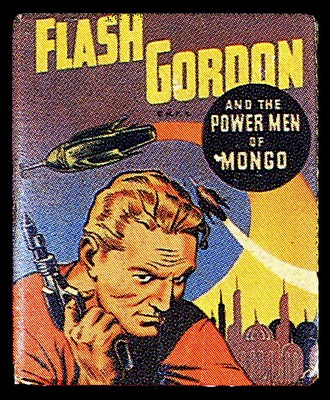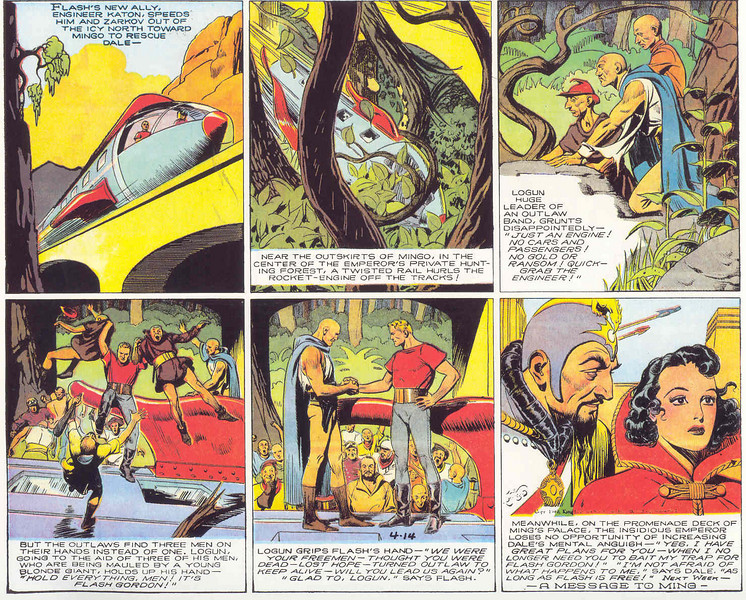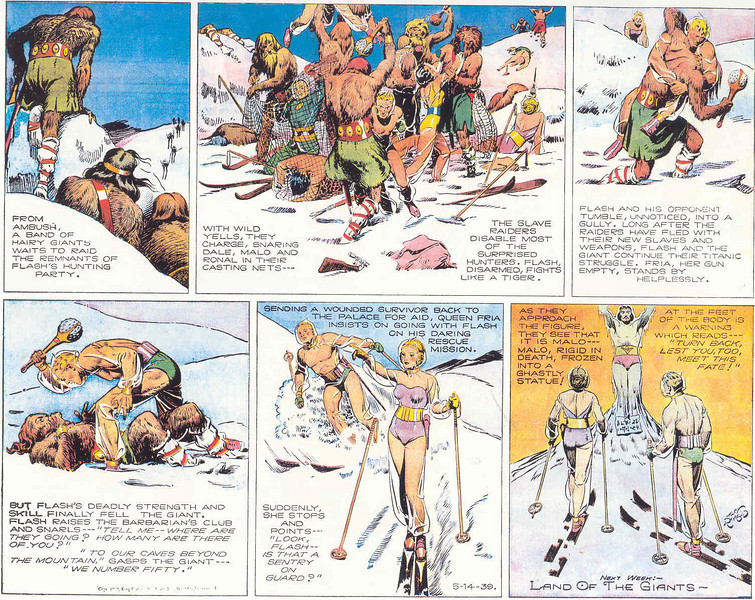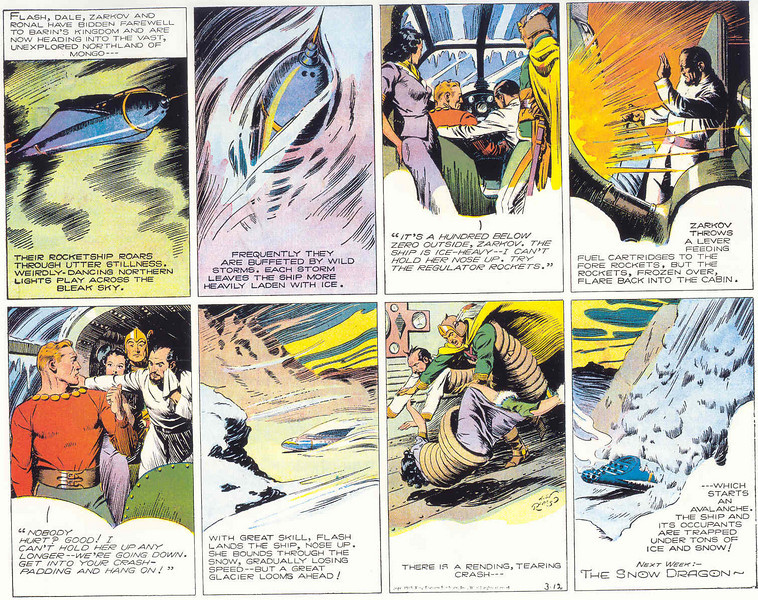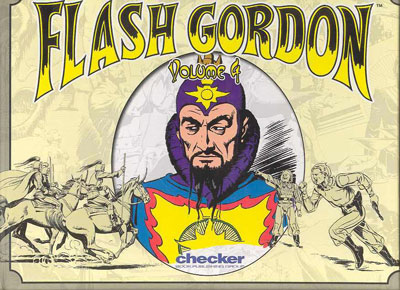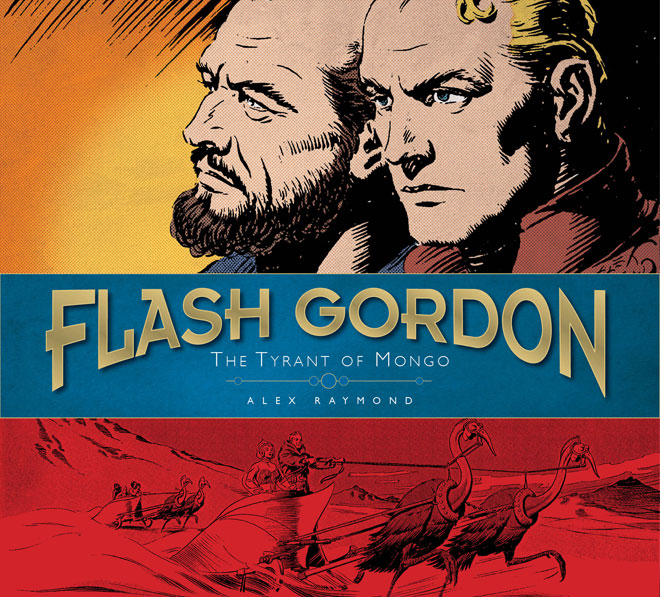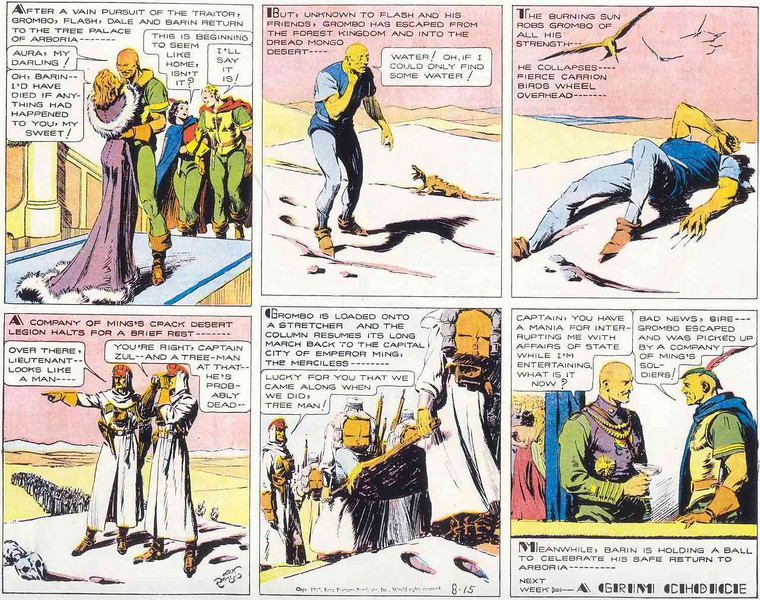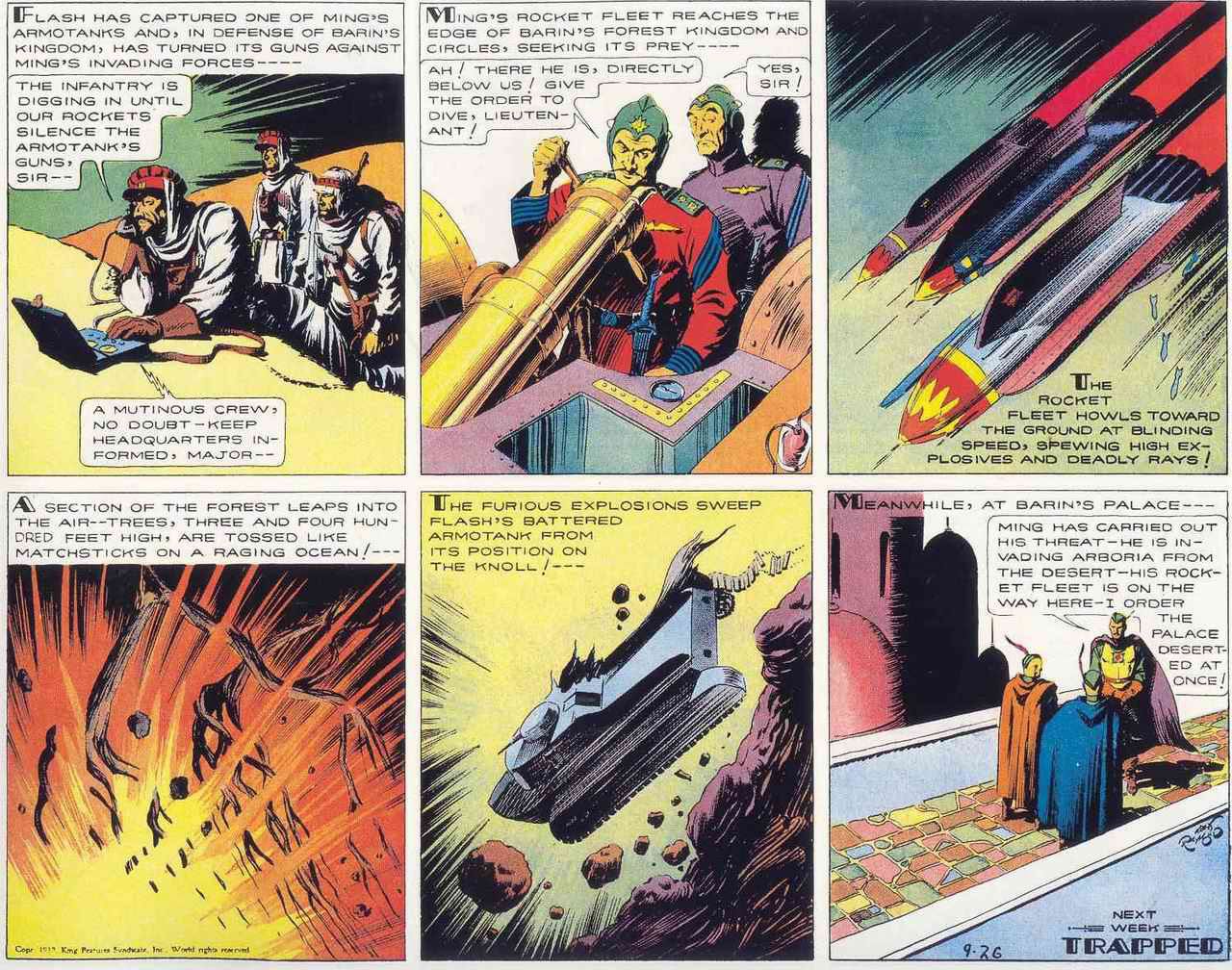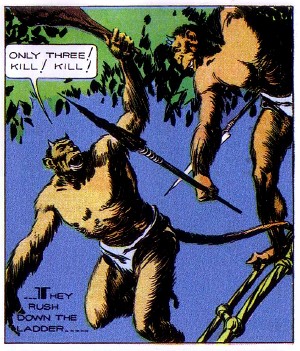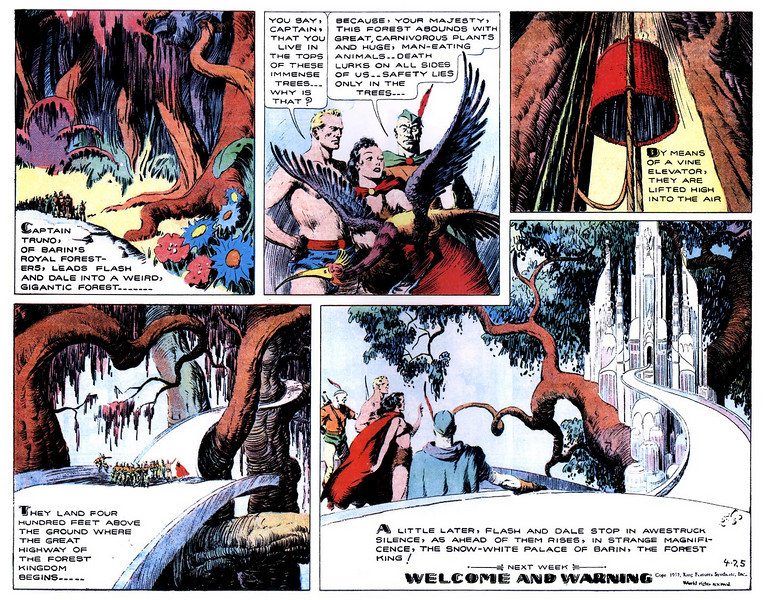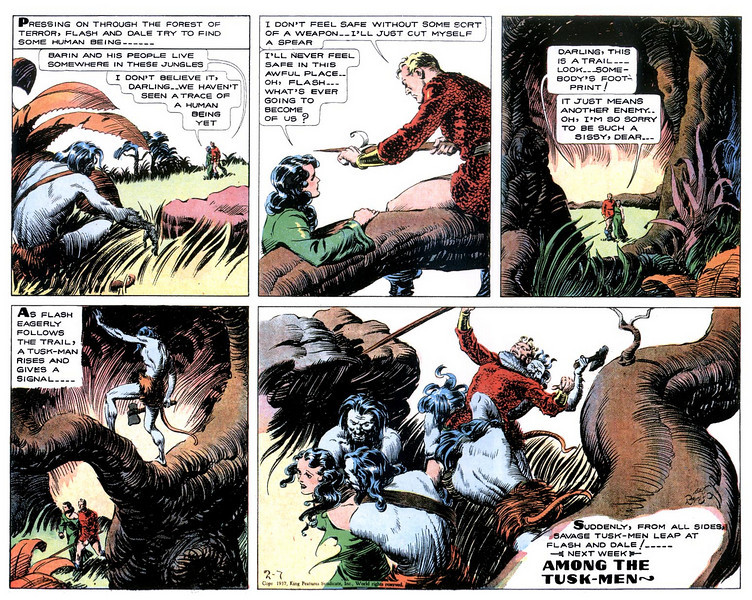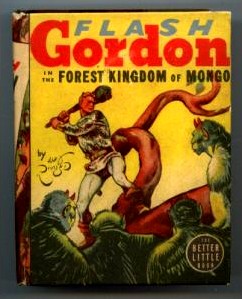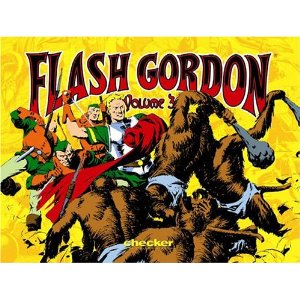Blogging Alex Raymond’s Flash Gordon, Part Fifteen – “The Fall of Ming”
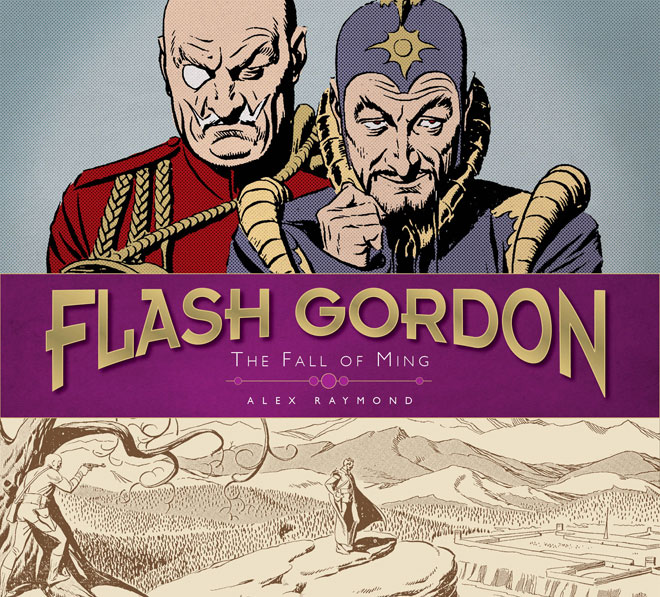
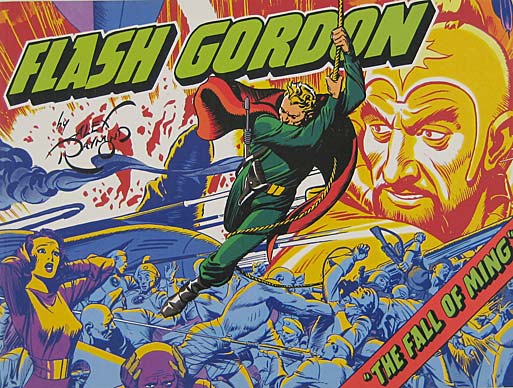 “The Fall of Ming” was the fifteenth installment of Alex Raymond’s Flash Gordon Sunday comic strip serial for King Features Syndicate. Originally published between January 19 and June 29, 1941, “The Fall of Ming” picks up the storyline where the fourteenth installment, “The Power Men of Mongo” left off with Flash having reached the gates of Ming’s concentration camp in a daring attempt to rescue Zarkov and the other political prisoners held there. Bulon is just about to assassinate Flash when he is captured by Ming’s guards. The traitor quickly reveals Flash’s hiding place. Flash barely escapes with his life, but later succeeds in infiltrating Ming’s “death patrol.”
“The Fall of Ming” was the fifteenth installment of Alex Raymond’s Flash Gordon Sunday comic strip serial for King Features Syndicate. Originally published between January 19 and June 29, 1941, “The Fall of Ming” picks up the storyline where the fourteenth installment, “The Power Men of Mongo” left off with Flash having reached the gates of Ming’s concentration camp in a daring attempt to rescue Zarkov and the other political prisoners held there. Bulon is just about to assassinate Flash when he is captured by Ming’s guards. The traitor quickly reveals Flash’s hiding place. Flash barely escapes with his life, but later succeeds in infiltrating Ming’s “death patrol.”
Dale makes a full recovery and learns from Rena that Bulon is plotting against Flash. The two girls defy Ergon’s orders and set out to rescue Flash. Dale is captured by Sergeant Mordo, one of Ming’s patrolmen while Rena manages to escape. Dale is sent to the concentration camp, but Flash soon learns of her arrival and sets out to rescue her.
Alex Raymond again pushes the boundaries of 1940s sensibilities in the panel showing the muscular and unattractive female guards stripping Dale of her clothing. Likewise, his efforts to show the brutality of German concentration camps proves effective on an entirely different level. The camp’s warden Terro is depicted as a monocled Aryan monster (admittedly, Mongo is also filled with other politically incorrect caricatures from insidious Asians to traitorous Semitic characters as was common in the pulp fiction of the era). Raymond shows many of the prisoners with shaved heads, half-starved, and regularly beaten by the abusive warden. He also depicts a nubile young woman with her back being broken on a wheel. Don Moore’s script notes that prison cells are designed to prevent inmates from standing straight or being able to sit or lie down in an attempt to drive them mad. Raymond was obviously outraged by the War in Europe and was doing the best he could to draw readers’ attention to it by making Ming’s heinous actions strongly parallel Hitler’s atrocities that were recounted in newspapers of the day.
